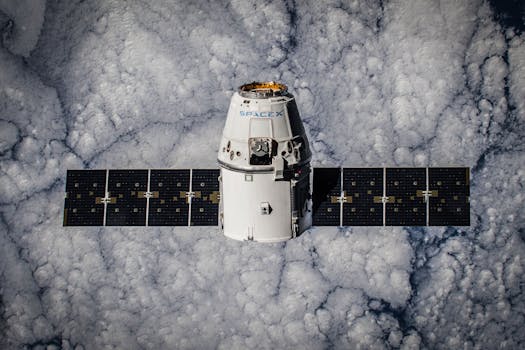The Future of Satellites: Revolutionizing Global Communication and Exploration
The future of satellites is rapidly evolving, with advancements in technology and innovation poised to revolutionize global communication and exploration. From improved communication systems to enhanced navigation and Earth observation, the potential of satellites is vast and exciting.

The Future of Satellites: Revolutionizing Global Communication and Exploration
Focus Keyword: The Future of Satellites
The future of satellites is rapidly evolving, with advancements in technology and innovation poised to revolutionize global communication and exploration. Satellites have been a crucial part of our daily lives, providing us with navigation, communication, and weather forecasting, among other services. As we move forward, the role of satellites is expected to expand, with new technologies and applications emerging to transform the way we live and work.
One of the most significant developments in the field of satellites is the emergence of small satellites, also known as CubeSats. These tiny satellites, which are often no larger than a shoebox, are relatively inexpensive to build and launch, making them an attractive option for companies and organizations looking to access space. Small satellites are being used for a variety of applications, including Earth observation, communication, and scientific research.
Advancements in Satellite Technology
Recent advancements in satellite technology have been driven by innovations in materials, propulsion systems, and electronics. New materials, such as advanced composites and 3D printing, are being used to build lighter and more efficient satellites. Improved propulsion systems, such as electric propulsion and advanced ion engines, are enabling satellites to travel farther and faster, while using less fuel. Advances in electronics, such as high-speed processors and advanced sensors, are allowing satellites to collect and transmit more data, and to perform more complex tasks.
Another area of innovation in satellite technology is the development of satellite constellations. These constellations, which consist of multiple satellites working together, are being used to provide global coverage and to enable new applications, such as satellite-based internet and navigation. Companies like SpaceX and OneWeb are leading the charge in this area, with plans to launch thousands of satellites in the coming years.
Applications of Satellites
Satellites have a wide range of applications, from communication and navigation to Earth observation and scientific research. One of the most significant applications of satellites is in the field of communication. Satellites are used to provide internet and phone services to remote and underserved areas, and to enable global communication. They are also used for navigation, providing location information and timing signals to GPS receivers on the ground.
Satellites are also being used for Earth observation, providing valuable data on the health of our planet. They are used to monitor climate change, track weather patterns, and predict natural disasters. Satellites are also being used for scientific research, providing insights into the universe and the laws of physics. They are used to study the Earth’s magnetic field, the solar wind, and the formation of galaxies.
Challenges and Opportunities
While the future of satellites is exciting, there are also challenges and opportunities that need to be addressed. One of the biggest challenges facing the satellite industry is the issue of space debris. As more satellites are launched, the risk of collisions and debris increases, posing a threat to the safety of satellites and astronauts. Another challenge is the issue of regulatory frameworks, which are often unclear or inadequate, making it difficult for companies to navigate the complex and evolving landscape of satellite regulations.
Despite these challenges, the opportunities presented by satellites are vast and exciting. Satellites have the potential to revolutionize global communication and exploration, providing new opportunities for economic growth, scientific discovery, and social development. As the technology continues to evolve, we can expect to see new and innovative applications of satellites, from satellite-based internet and navigation to Earth observation and scientific research.



